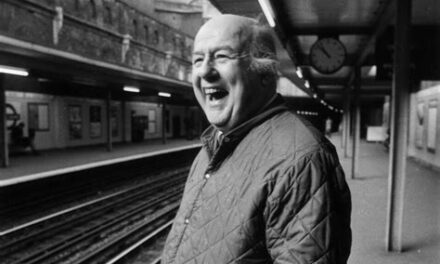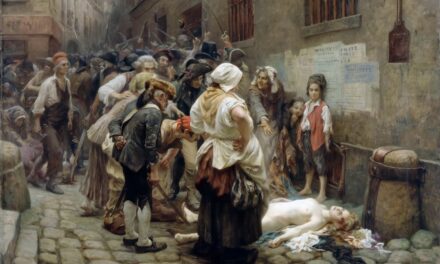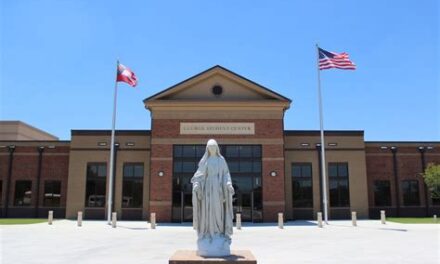Henry Olson’s The Working Class Republican: Ronald Reagan and the Return of Blue-Collar Conservatism is so new I do not even have a copy of it as of this writing; so there’s no way to properly call this a review. But Olson’s writings over the last months and a recent talk at the American Enterprise Institute on the subject of Reaganism have given me, I hope, a sufficient idea of his thesis to address it.
In a nutshell, Olson contends that Ronald Reagan, hero of American Conservatives, in actuality held views counter to the limited-government, strict-constitutionalist creed that had risen out of the ashes of Barry Goldwater’s defeat in 1964 to dominate Republican Party politics in the seventies and eighties. To simplify an argument that I gather from his articles and lecture is rather complex, Reagan was from his younger days a New Dealer and remained one all of his political life.
The argument is interesting. Anyone who knows, however sketchily, Reagan’s biography, must readily confess that Reagan was for years a Democrat who voted for Franklin Roosevelt four times and for Harry Truman. But by the time he became prominent on the national political scene, something had changed in his outlook—or at least that is how most Reaganites understood it. Those who flocked to Reagan’s corner, first to place him in California’s governor mansion in 1966 and, second, as early as 1968, to nominate him for president, surely believed Reagan was just the man to roll back the tide of expansive government. According to Olson, they were wrong.
In Olson’s analysis, Reagan saw government not so much as the Founders had, as an institution whose chief business was to maintain the peace so that liberty might flourish, but as a fount of compassion, a conglomeration of agencies, each created to meet a pressing need that, once attended to, would lift up the unfortunate—fundamentally a popular understanding of what the New Deal was all about. According to this theory, government exists to deal with crises great and small via ad hoc legislation creating departments and funneling money to meet “needs.”
Are some communities too poor to enjoy the benefits of electricity? No worry: the Rural Electrification Administration (REA) will provide it. Are farmers getting too small a return on their crops? Let the Department of Agriculture set proper limits on yields, and, presto, prices will rise. Are artists starving? A government grant will fix that too: a mural for every wall.
Under such a system, government is the best and perhaps only means to meet such emergencies; it alone has the funds (our unlimited tax dollars), the manpower (an army of bureaucrats), and the brains (as in “Brain Trust”) to solve the dilemmas capitalism has either created or just plain failed to address. It’s function is largely practical; only a hide-bound ideologue would object to its taking on such powers.
Throughout Olson’s celebration of New Deal spreading-of-the-wealth schemes is a remarkable silence about their constitutionality. Any historian would know that the courts in FDR’s first administration did not ignore this key legal question. Prior to the arrogant court-packing scheme, the judges often found the legality lacking.
Similarly, Olson is mum on the success of the New Deal in ending the Great Depression. There are compelling studies to suggest that unemployment through the thirties was a rather up-and-down affair. Secretary of the Treasury Henry Morgenthau, an official of no small prominence, admitted in 1938 that despite all of their efforts the New Deal had not ended the depression. In fact, he said, it had created little more than a huge deficit.
But let’s assume for a moment that Olson’s and, as he will have it, Reagan’s understanding is that our government—and I do mean Washington, D.C.—exists to lend a helping hand to those who are down and out. Is it unreasonable to suppose that once the need has been met, a given agency, its ad hoc purpose fulfilled, should be abolished? Think what you will, experience paints another picture.
The REA, which I mention above, is a good example. It is undeniable that many rural Americans did not have electricity in the thirties; it’s a fair bet some didn’t know what electricity was. If the REA provided it, then those same folks discovered its benefits perhaps years before they would have under a more limited government. (I ought to add, whether that’s a good thing is open to debate.) But progress is progress, and once a few truly backward places were electrified, one could easily believe that time and tide would bring the new technology to other areas without the aid of an “administration.”
In other words, the REA could wind down. Time and tide notwithstanding, it still exists 80 years later albeit under a new moniker (Rural Utilities Service) providing even telecommunications services. Now Farmer Brown too can hypnotize himself to death with the Internet as his crops wither.
To be fair, Olson does not sing the praises of the REA, but the activities he offers as justifying the great, good paternal government has bestowed upon the nation are similar in kind. The interstate highways system is one, a product of the “New Deal Republicanism” of President Eisenhower. Another is the creation of colleges and universities across the land, offering educational opportunities undreamed of before the New Deal saw fit to bankroll the project.
It’s true that most of us have grown so used to our highway system that it’s hard to imagine life without it, but let’s try. Are we really better now that we can zoom all over the country at 75 mph? Are our countryside and cities more beautiful for it? Is the environment cleaner? Just asking. And, oh yes, was the act constitutional? As a matter of act it wasn’t. Eisenhower had to claim the system was for the movement of the military to get the necessary approval. How many convoys have you counted on I-81 lately?
As for the financing of colleges, Olson notes that apart from the land-grant schools the government had done little for higher education prior to the New Deal. However, the federal land-grant law of 1862 (of, I ought to add, questionable constitutionality; it was vetoed in its original run) created dozens of major institutions across the country: MIT, Cornell, LSU, Texas A & M, Iowa State, Purdue, Ohio State—even the University of Alaska. Add to that many state universities (Virginia, North Carolina, the University of Texas, to name a few) that came into existence as a result of constitutional acts of their respective states.
With the great private schools that already existed, it’s hard to believe that America would be an educational backwater had the New Deal not stepped up to the plate to build a college on every corner.
I could go on, but one has to stop somewhere. Apart from the questionable practicality of so much of New Dealism (or New Reaganism qua Olson), the realities of intrusive government, of permanent agencies that have outlived their use, and of bureaucratic overreach ought to make one pause before one exalts such a path as healthy for the nation.
Power tends to corrupt, Lord Acton famously opined, and if Ronald Reagan didn’t catch the stench of statist arrogance in the New Deal, something was faulty with his sense of smell. As for Henry Olson, he is surely an intelligent man and, as far as I can tell, likeable. But as I listened to him and read his essays, I found myself modifying an old saying: with Conservatives like that, who needs liberals?














